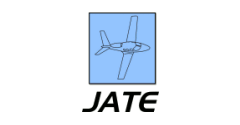Abstract
Processing passengers quickly and efficiently is one of the top goals for airport administrators, and major international gateways have the added challenge of processing passengers representing a variety of cultures and nations. People with diverse cultural backgrounds may interpret signage layouts differently with respect to symbols and text. Consequently, dedicated research into signage perception may provide airport administrators with a more informed sense of how to convey appropriate movement and directional information within their terminals. There are many ways to answer the broad question of what signage encourages passengers to move most efficiently
through an airport terminal. This study focused on the different ways in which Chinese and American airline passengers navigated through a terminal using either signs showing text only, symbols only, or both text and symbols. Quantitative in nature, the study used a unique computer simulation to generate paths having signage with English text, common symbols, or a combination of both. Participants clicked on arrows to follow the path to the specified goal for each different variation. Total completion time measurements and completion accuracy (in terms of correct versus incorrect clicks) were gathered. Analysis of the results suggested that there was a statistically significant difference related to cultural differences on a passenger’s ability to wayfind based on the type of signage used. Additionally, within cultural groups there was a statistically significant difference as to which arrangements encouraged more efficient wayfinding and those which did not. Lastly, the results suggested a difference in which sign type produced the best wayfinding performance and which sign type people actually preferred.
Recommended Citation
Leib, Steve; Dillman, Brian; Petrin, Donald; and Young, John P.
(2012)
"A Comparison of the Effect of Variations to U.S. Airport Terminal Signage on the Successful Wayfinding of Chinese and American Cultural Groups,"
Journal of Aviation Technology and Engineering:
Vol. 1:
Iss.
2, Article 6.
Available at: https://doi.org/10.5703/1288284314661


